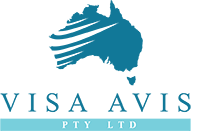

The temporary employer sponsored visas
TSS (Subclass 482) visa
If you are a skilled worker whose occupation is on one of the Australian Government “lists” and you have an Australian employer who is willing to nominate you for this visa, then you may be eligible to apply for a TSS visa. Depending on the “list” that your occupation is on, the visa can be granted for up to two years (renewable once onshore, currently no pathway to permanent residence) or up to four years (with a potential pathway to permanent residence). Find out which Australian Government “list” your occupation is on here: Home affairs – occupation list.
The aim of this visa programme is to help Australian employers address labour shortages by employing skilled workers from overseas where the employer hasn’t been able to find an appropriately skilled Australian worker. It is a three stage process:
- The employer applies for approval as a Standard Business Sponsor for TSS visas
- The employer submits a nomination application for the role it looking to fill
- The potential employee applies for the visa.
Once the visa is granted you will only be able to work for your sponsoring employer (subject to certain, limited exemptions). If you stop working for your sponsoring employer, you will have 60 days in which find another employer who is prepared to sponsor you.
Application for approval as a Standard Business Sponsor (SBS application)
To be approved as a Standard Business Sponsor, the employer will need to demonstrate that it is actively and lawfully operating in Australia (an overseas business can apply to become a sponsor too- please contact us for more details). Some of the critical things to provide at this stage are:
- The correct ABN and business name;
- Business Activity Statements (BAS) and financial statements.
The costs associated with the SBS application (both Department of Home Affairs charges and any fees paid for the assistance of a Registered Migration Agent must be paid by the employer.



Nomination Application
When the SBS application has been submitted, an employer must nominate a position within their business as one which needs to be filled by an overseas citizen. As part of this step, there are various requirements to be met, some of which are:
- Labour Market Testing. This is where the employer demonstrates that it has been unable to find an Australian citizen or permanent resident to fill the role. Subject to limited exemptions, this involves meeting very strict advertising requirements. If those requirements aren’t met, the application will be refused. We strongly encourage any employer who is looking to employ overseas workers to obtain professional advice in this area before submitting the application
- Salary. There are two components to this. The first is that the salary offered to the overseas employee must be at least $53900 plus superannuation. In addition, the salary must also be at the market rate (for example, if the market rate for a carpenter is $65000, the employer can’t pay the overseas carpenter $53900). Additionally, some occupations are subject to higher minimum salaries.
- Payment of the Skilling Australians Fund Levy (SAFL). This is a charge levied by the Department of Home Affairs which must be paid by the employer at the time the nomination application is submitted. It has replaced the requirements under the subclass 457 visa programme for an employer to spend a minimum amount on training Australian citizens and permanent resident employees. The amount payable will depend on the turnover of the business and the number of years for which a visa is required. For business with a turnover of less than $10 million, the annual levy is $1200 (so a maximum of $1200 x 4 years = $4800). For business with a turnover of $10 million or more, the annual levy is $1800 (so a maximum of $1800 x 4 years = $7200).
The costs associated with the nomination application (the Department of Home Affairs charges, SAFL and any fees paid for the assistance of a Registered Migration Agent must be paid by the employer).
Visa application
This is where the visa applicant demonstrates that s/he has the skills and experience required to fill the role.
A lot of supporting documentation is needed at this stage. The required documents will vary according to your individual circumstances, but key points are that you must:
- Be nominated to work in an occupation on one of the “lists” for this visa. A
medium term visa can be granted for up to four years if your occupation is on the Medium and Long Term Strategic Skills List (MLTSSL) or the Regional List for TSS visas. A short term visa can be granted for a maximum of two years if your occupation is on the Short Term Skilled Occupation List.
- Have relevant skills, qualifications and employment experience for your nominated occupation
- Have a positive skills assessment (if this is required for your occupation)
- Have at least two years of relevant, full time work experience in your occupation or a related field
- Meet the English language requirements (unless specific exemption criteria apply)
- Meet Australia’s health and character requirements
- Have health insurance
- Intend to stay in Australia temporarily (short term visa only).
Either you or your employer can pay the costs of the visa application including the Department of Home Affairs charges and any fees paid for the assistance of a Registered Migration Agent.


Can I include my family?
You can include some members of your family in the application (generally your spouse/ partner and your children). An extra Department Home Affairs application charge is payable by those additional applicants and they must also meet Australia’s health and character requirements
The TSS visa process is complex. If one stage fails, the subsequent stages will also fail meaning that either you (or your employer) may lose a lot of money. It is incredibly important to get professional advice regarding this process. We’ve met a lot of people after they have had a TSS application refused. That refusal could have been avoided had either they, or their employer, taken advice to make sure that they understood the requirements before the applications were submitted. We have helped large numbers of employers and overseas workers with this programme. Contact us to see if we can help you, too.
Get in touch with Esther with a simple phone call or fill in the form below
and we can work with you on your Australian journey.
